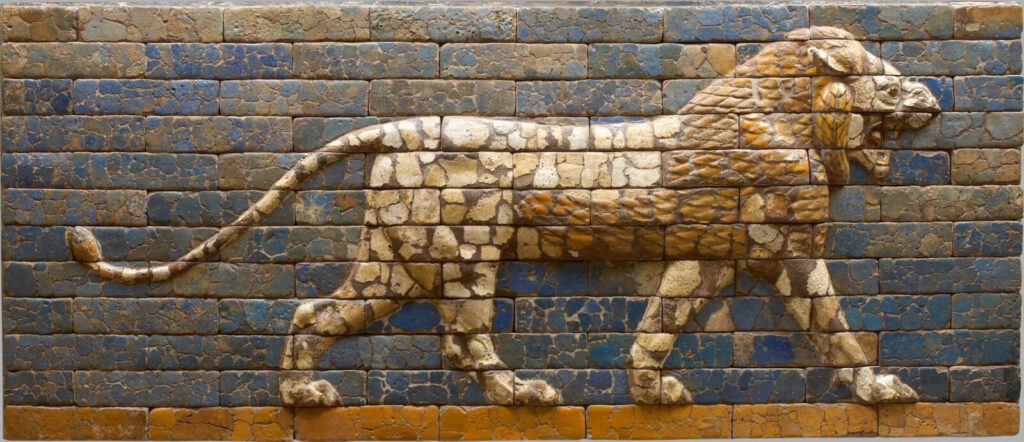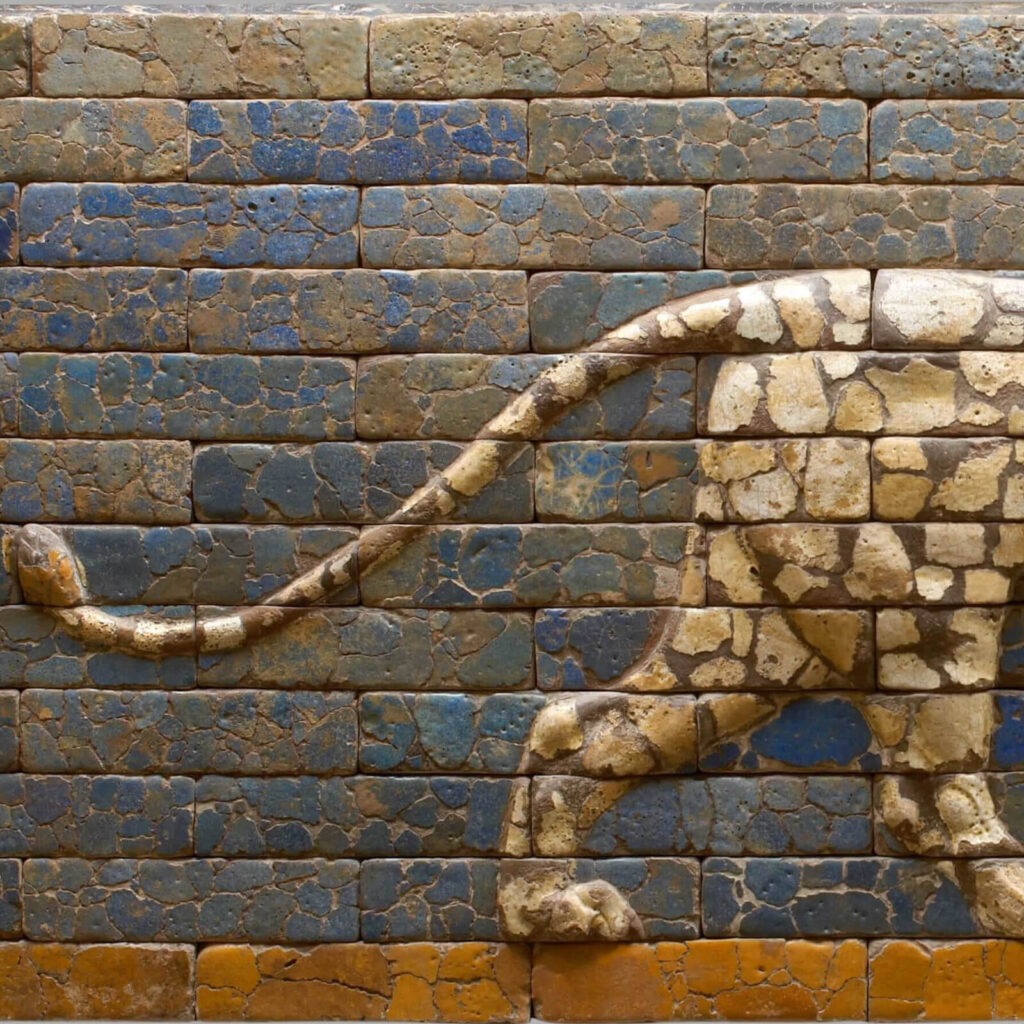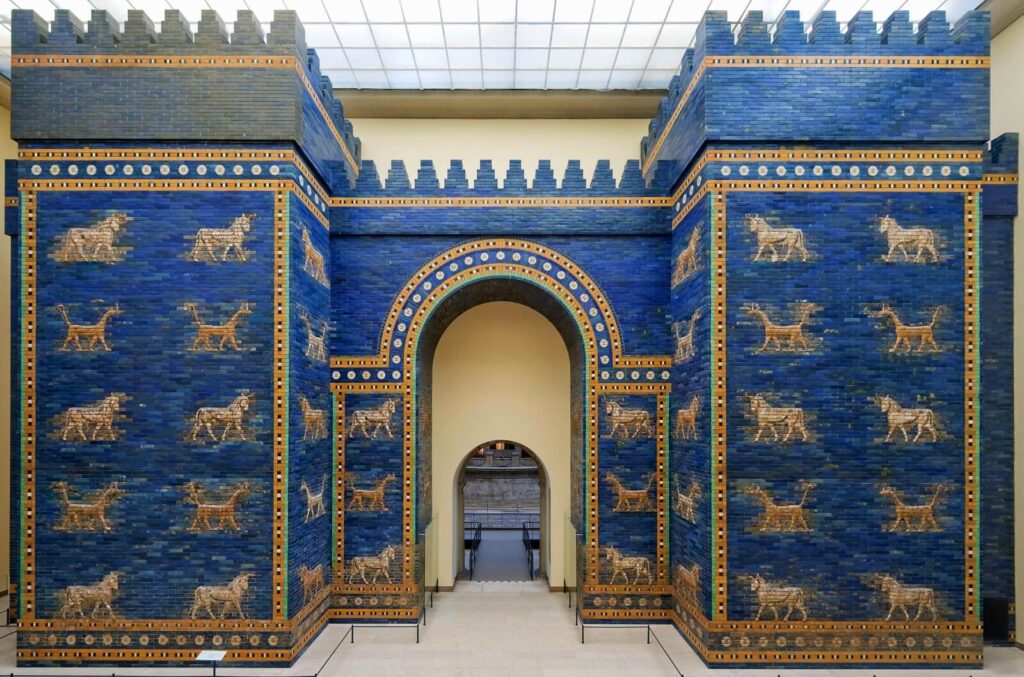Masterpiece Story: Monet’s Garden at Giverny
Claude Monet loved gardening almost as much as he loved painting. When he finally settled in Giverny, he created a natural masterpiece which acted as...
Catriona Miller 23 November 2025
Striding Lion is a masterpiece of Mesopotamian art with monumental size and composition. It symbolizes the strength of King Nebuchadnezzar II and the ferocity of the goddess Ishtar. It evokes the power of the Neo-Babylonian Empire with its bold lines, vibrant colors, and technical creation. It joined the Kunsthistorisches Museum in Vienna, Austria, in 1930 where it has remained a cornerstone of the Mesopotamian collection.

Striding Lion, 604-562 BCE, Processional Way, Babylon, Iraq, Kunsthistorisches Museum, Vienna, Austria.
The reign of King Nebuchadnezzar II is considered a golden age of Mesopotamian culture. He ruled from 604 to 562 BCE during the Neo-Babylonian Empire. King Nebuchadnezzar II was the most renowned king of his era due to his extensive exploits recorded in the biblical Book of Daniel and his widespread artistic patronage. Under his rule, Babylon became one of the greatest cities of antiquity. It claimed the Hanging Gardens of Babylon and the Tower of Babel as its two most famous landmarks. Within this rich architectural and artistic culture, Striding Lion was created to adorn Babylon’s Processional Way.

Striding Lion, 604-562 BCE, Processional Way, Babylon, Iraq, Kunsthistorisches Museum, Vienna, Austria. Detail.
Striding Lion measures 3 feet 6 inches (1.07 meters) high and 7 feet 7 inches (2.30 meters) wide. It is a basso-relievo or low relief sculpture featuring a Babylonian lion composed of yellow, brown, and red bricks against a blue background. Every glazed brick is individually formed to create the lion and background when assembled together. Therefore, the lion and background are not separate elements cemented together but rather structurally and artistically integrated into one unified image.

Striding Lion, 604-562 BCE, Processional Way, Babylon, Iraq, Kunsthistorisches Museum, Vienna, Austria. Detail.
The roaring animal once adorned the Processional Way that linked Babylon’s Ishtar Gate to the city’s central temple. The 250-meter Processional Way was flanked by towers at regular intervals that featured walking lions. These lions were symbols of Ishtar, the Mesopotamian goddess of beauty, love, and war. She is comparable to the Greek goddess Aphrodite but with a belligerent personality streak.

Processional Way, 604-562 BCE, glazed clay bricks, Babylon, Iraq, Pergamon Museum, Berlin, Germany.
In contrast, the more famous Ishtar Gate was adorned with dragons and bulls symbolizing Marduk, the Mesopotamian god of thunderstorms. A section of both the Ishtar Gate and the Processional Way are reconstructed and now are displayed at the Pergamon Museum in Berlin, Germany. They both attest to the magnificence of Nebuchadnezzar II’s Babylon, the Neo-Babylonian Empire, and the original context of Striding Lion.

Ishtar Gate, 604-562 BCE, glazed clay bricks, Babylon, Iraq, Pergamon Museum, Berlin, Germany.
Adam Augustyn, “Ishtar“, Encyclopedia Britannica, August 28, 2019.
Helen Gardner, Fred S. Kleiner, and Christin J. Mamiya, Gardner’s Art Through the Ages, 12th ed. Belmont: Thomson Wadsworth, 2005.
“Ishtar Gate”, Google Arts & Culture. Retrieved December 3, 2021.
“Lion Passant”, Google Arts & Culture. Retrieved December 1, 2021.
“Processional Way from Babylon with Brick Reliefs of Walking Lions”, Google Arts & Culture. Retrieved December 3, 2021.
“Wall Piece with the Relief of a Striding Lion”, Collection, Kunsthistorisches Museum. Retrieved December 1, 2021.
DailyArt Magazine needs your support. Every contribution, however big or small, is very valuable for our future. Thanks to it, we will be able to sustain and grow the Magazine. Thank you for your help!